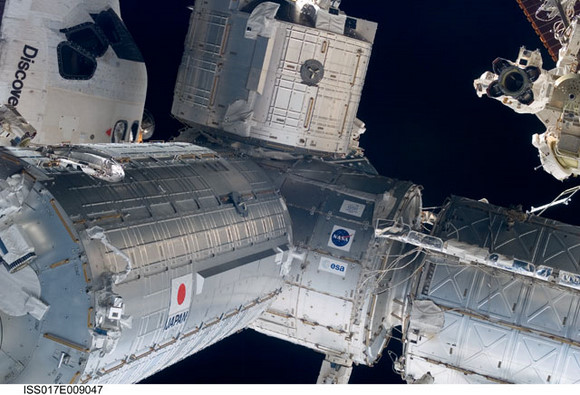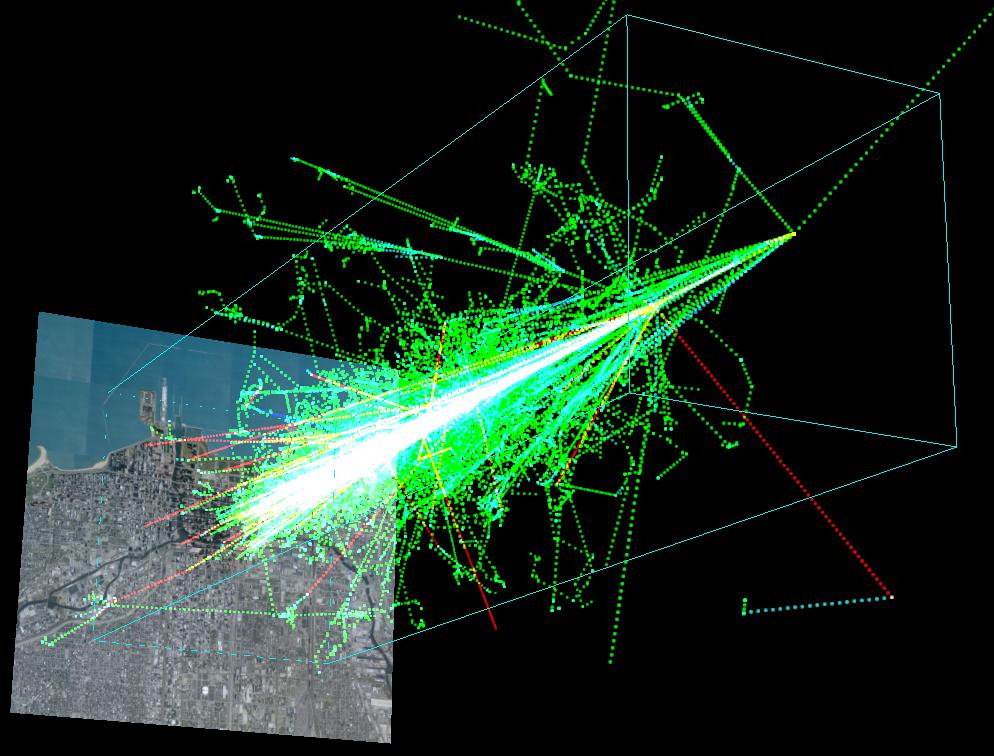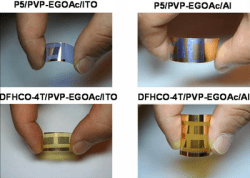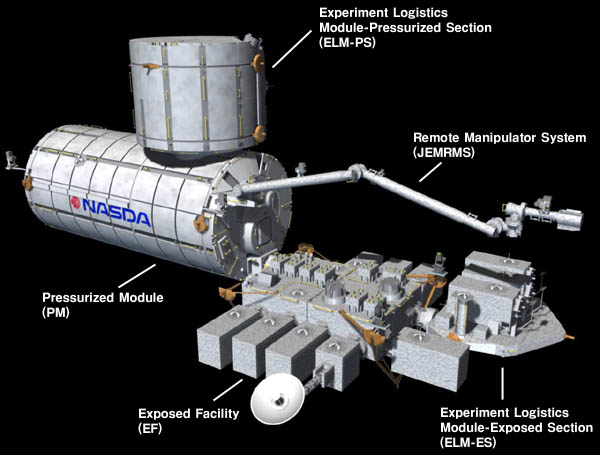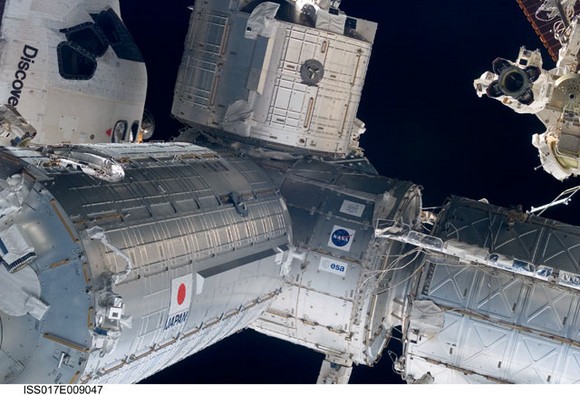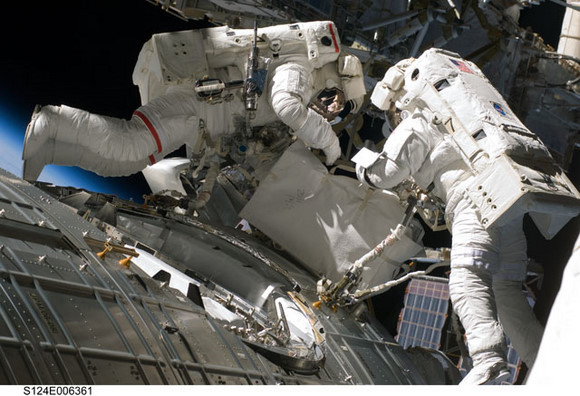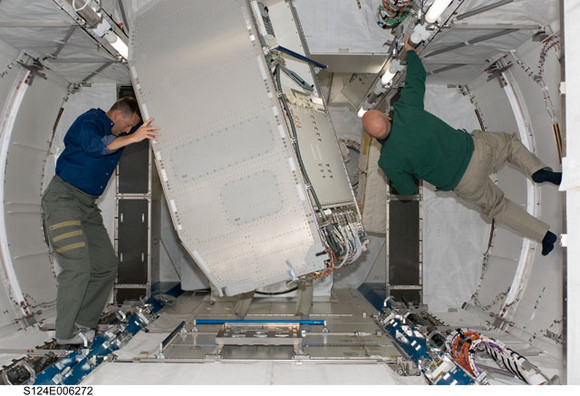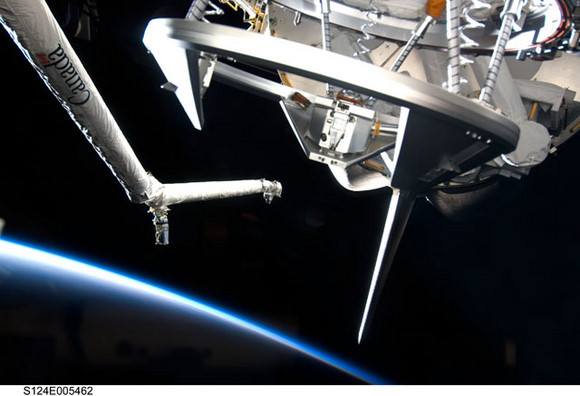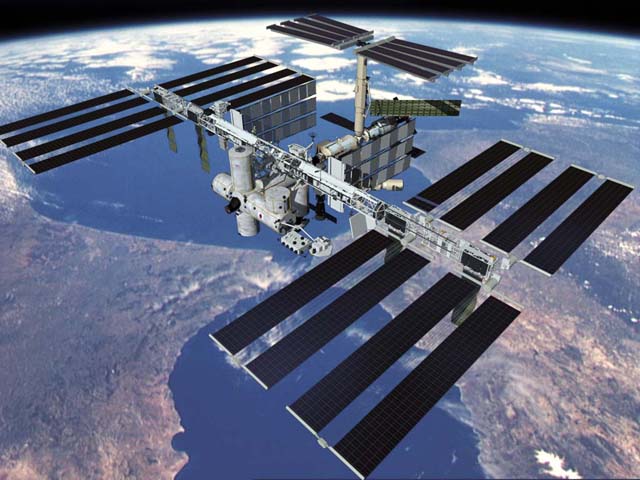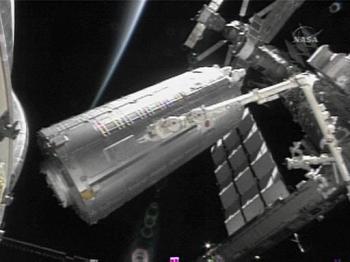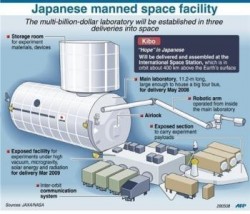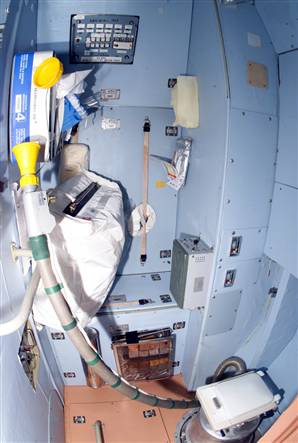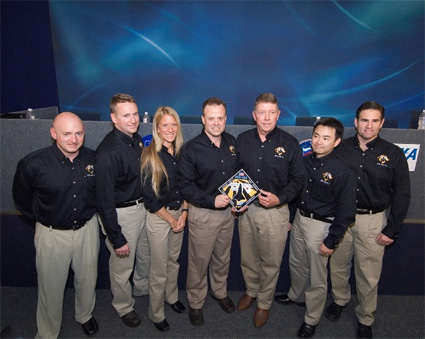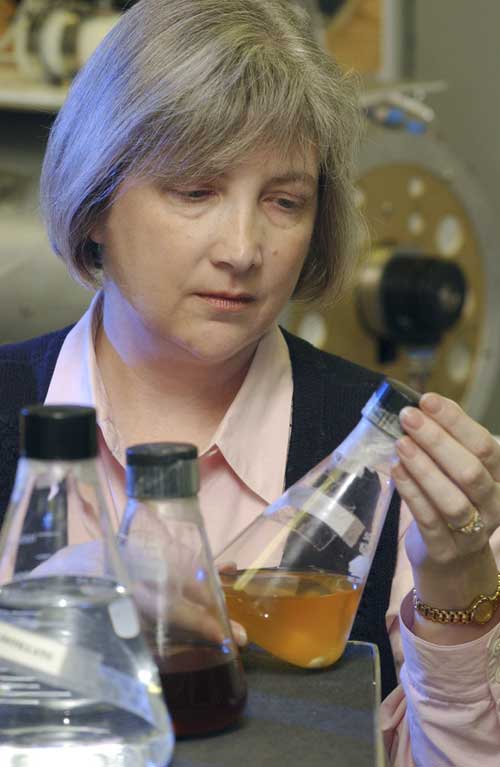Last week’s record re-boost from ESA’s Automated Transfer Vehicle (ATV) pushed the International Space Station 7 kilometres (4.3 miles) higher to an orbit of 345 kilometres (214 miles) above Earth. This was the second re-boost carried out by the ATV, a mission (dubbed “Jules Verne”) that has surpassed all expectations. In fact, the ATV has not only passed each and every mission objective perfectly, it has gone above and beyond the call of duty…
After 11 weeks attached to the ISS, ATV Jules Verne continues to provide an unexpected service to the ISS crew. Last Thursday it successfully boosted the 300 tonne ISS to a higher orbit (this was the second re-boost, the first was at the end of April) and it has since refuelled the station with 856 kg of propellant. Although these were essential tasks, the ATV has provided an invaluable service to the crew. Not in the design plan of the ATV, the roomy temporary supply vessel has provided a great area for the crew to sleep and wash, plus one of its empty tanks has been used to store 110 litres of condensation water from the ISS. But the best news of all: the ATV’s mission has been extended for a month, allowing the crew to enjoy the ATV for a little while longer. The scheduled undocking and planned burn up on re-entry will now take place in September, not August.
Watch the ESA video montage of the crew working (and playing) inside the spacious ATV »
Ever since Jules Verne docked at the ISS on April 3rd, the ISS astronauts have had access to the roomy 48 m3 vessel and they have made it a centre for daily life onboard the station. The ATV mission control gave the crew special permission to use the spaceship for a variety of everyday needs. For starters, the astronauts and cosmonauts have been using the ATV as an improved “Crew Hygiene Station” where they have been able to wash their laundry. They have also been able to use the space to wash their hair with an alcohol-free rinse less shampoo (I’d love to know how that stuff works!). This additional space also has the effect of keeping the station’s air humidity low.
Watch an animated version of last week’s re-boost operation »
Crewmembers have also used the ATV as alternative sleeping quarters. Apparently, the ATV is a quieter environment to the rest of the station as the sound levels of the ventilator fans and air circulation is fairly low. The station’s sleeping arrangements are fairly strict, two crewmembers must sleep in the small ISS crew cabins, but the third can sleep anywhere in the station. It turns out the ATV has proven to be the location of choice for the third crewmember.
For further detail about the huge array of ATV successes, check out the ESA news release. For now, the crew have a little more time to enjoy the ATV before it ends its mission in September only to be dropped into the atmosphere where it will burn to a cinder, leaving any mass left to drop to the bottom of the Pacific Ocean. How sad.






